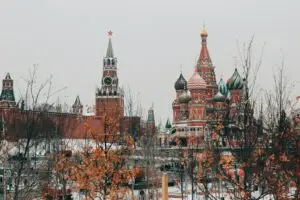Over the past decades, the U.S. has lost millions of industrial jobs. In theory, the booming service sector could have compensated for these losses – but that hasn’t happened. Why? For one, the nature of the jobs is different: Factory work provided many Americans without a college degree with stable, well-paid employment for decades. An assembly line worker with a high school diploma could earn a solid middle-class income in the industry. Many of these lost positions, however, have largely been replaced by lower-paying service jobs. Jobs like waiting tables, retail sales, or driving for delivery services often don’t offer the same wages or comparable benefits as a unionized factory job.
Furthermore, the quality of the new service jobs is often lower. An analysis shows that while the U.S. economy has created millions of new jobs since 1990, most of them are in lower-paying sectors. In total, around 20 million low-skilled jobs (e.g., in restaurants and caregiving) were created, but only about 12 million high-skilled jobs. This is also reflected in wages: Even full-time, typical service jobs earn significantly less on average than industrial jobs. Economic studies show that from 1998 to 2019, nearly all net new jobs in the U.S. were in the low-paid service sector, replacing the lost “good” industrial jobs nearly one for one. In other words, while there are now about as many employed Americans as before deindustrialization, many more of them are working in poorly paid service jobs. The highly-paid technology and finance sectors have also grown, but they don’t come close to replacing the massive loss of factory jobs. Furthermore, these top jobs are often concentrated in certain metropolitan areas and require degrees that former factory workers from the Rust Belt generally do not have. As a result, economic advancement was absent for many workers – and once-thriving industrial regions fell into unemployment, poverty, and hopelessness.
Shareholder Capitalism: When Companies Sacrifice Jobs
A major driver of deindustrialization has been shareholder-oriented corporate strategies. Since the 1980s, large corporations have focused on maximizing profits for shareholders. The buzzword was “Shareholder Value.” What did this mean in practice? Cutting costs at any price. Management teams were increasingly measured by stock prices and rewarded accordingly. The result: Many companies outsourced their production (offshoring) or replaced workers with machines (rationalization) to save wages. Even traditional U.S. corporations didn’t hesitate to lay off massive numbers of workers – in the 1990s, major job-cutting rounds even took place at flagship companies like AT&T and IBM to meet the expectations of financial investors.
At the same time, the “Nikefication” of the economy began: More and more companies focused on branding, design, and sales, while actual manufacturing was outsourced to cheaper contract manufacturers – following the example of Nike, which no longer manufactures its shoes itself. An example is Apple: In the 1980s, Apple still manufactured its Macintosh computers in California; today, nearly all Apple devices are assembled by partner companies in China. The number of production workers directly employed by Apple in the U.S. is minimal. How drastically the work environment of large corporations has changed is illustrated by a frequently cited comparison: By 2005, the largest employers in America were no longer industrial companies, but retail chains. Walmart – a typical representative with many low-skilled jobs – had become by far the largest employer in the U.S., with over ten times as many employees as General Motors. While GM offered hundreds of thousands of industrial jobs in the mid-20th century, today companies with many low-wage positions dominate. Or to put it more sharply: The typical U.S. employee at Apple today is no longer an engineer in the factory but a salesperson in a blue T-shirt at the mall.
These offshoring and downsizing strategies increased profits in the short term, but left a gap in the U.S. labor market. The freed-up resources didn’t flow back into job creation in the same way. On the contrary, many corporations preferred to invest their profits in stock buybacks or dividends rather than in new factories in the U.S. This created a vicious cycle: Production moved abroad, regional industrial bases collapsed, and with them, supplier companies and local services vanished, further amplifying the loss of jobs.
Automation and AI: Will Industrial Jobs Return?
But even if companies start producing again in the U.S., how many jobs would actually be created? Looking at modern manufacturing shows that automation has already replaced many industrial jobs over the decades. Robots, computer-controlled machines, and more efficient processes have led to factories today being able to produce the same amount with a fraction of the workforce. Estimates suggest that around 85% of U.S. industrial jobs lost since 2000 were due to productivity advances and automation, with only about 15% directly due to offshoring. In other words, even without offshoring, industrial employment would have declined sharply. One example is the steel industry – here, the number of employees in the U.S. has drastically decreased since the 1960s, while production volumes have been nearly maintained thanks to automation. Modern “smart factories” simply need far fewer workers.
This development calls into question the idea of reindustrialization as a job engine. New factories coming to the U.S. are often highly automated – full of robotics and AI systems, but with far fewer human workers. Elon Musk’s car factory or Amazon’s automated warehouses illustrate how high-tech facilities may be built in the U.S., but employ only a few hundred workers, rather than thousands as before. Additionally, artificial intelligence (AI) is advancing rapidly. AI can not only take over repetitive tasks in factories (e.g., quality control via computer vision) but is also increasingly impacting office and service tasks. Studies by the IMF warn that up to 60% of jobs in developed economies may be affected by AI in the near future – either through automation of tasks or entire job categories. We are therefore facing a technological transformation that is affecting not just the industrial sector, but many service industries as well (from self-driving trucks to automated customer hotlines).
For Trump’s dream of a return to mass employment in factories, this means: Even if political measures push companies to produce in the U.S., there may not be a large number of new jobs. You can bring factory halls back, but not necessarily the former lines of workers at the factory gates. Optimists hope that new technologies will also create new job fields (e.g., robot maintenance, AI development), which has often been the case historically. However, these new jobs usually require higher qualifications and remain numerically limited. In conclusion, a 2020s-style reindustrialization in manufacturing will most likely produce highly productive plants, but not a mass employment boom like the 1950s.
Bassett and Miran: Jobs or Control?
Given the structural factors, one might ask: What is Trump’s economic architects Scott Bassett and Stephen Miran really aiming for? Both officially emphasize bringing jobs back – after all, “Jobs back to America” is a catchy political promise. Bassett, for example, repeatedly refers to the devastated industrial regions: Deindustrialization has severely harmed the American Heartland, which earned Trump many votes in 2024. However, upon closer inspection, it seems that there’s more to the MAGA industry plan than just concern for the worker at the factory bench. Bassett and Miran come from the financial world (hedge funds, elite universities) and think in terms of national strength and long-term strategy. In their speeches and papers, they emphasize national security as much as the domestic economic aspect. Bassett warns that the industrial weakening of the U.S. is now a serious security risk – in the event of a conflict, the U.S. would lack domestic factories and know-how to quickly ramp up production. China has already surpassed the U.S. in many industrial sectors, undermining America’s defense capabilities. This strategic concern seems to outweigh the purely economic perspective for Bassett/Miran.
Indeed, Trump’s new three-phase strategy is not just about bringing jobs back, but also about solidifying America’s overall economic dominance. Miran has suggested in his much-discussed paper that the U.S. can “have its cake and eat it too” – meaning: achieve reindustrialization while still maintaining the U.S. dollar as the world reserve currency. This is a key point: The dollar as the leading currency ensures U.S. financial dominance and influence on the global economic order. Normally, reindustrialization (through exports) diminishes the role of one’s own currency, but that’s what they want to avoid. Bassett and Miran are apparently dreaming of a system where the U.S. enjoys both industrial self-sufficiency and financial hegemony – something that hasn’t existed since the end of Bretton Woods. For this, they are willing to accept significant geopolitical upheavals (e.g., new currency agreements like the “Mar-a-Lago Accord”). All of this suggests that Bassett/Miran are less concerned with the individual fate of workers than with macro-strategic goals: industrial self-sufficiency, geopolitical resilience, and the ability to project economic power. The U.S. should be independent of rivals in key areas while keeping other countries economically dependent (the “green, yellow, red countries” in Bassett’s plan). In short: production capacities and control are likely at the center – the promised jobs are a means to gain public support.
International Comparisons: How Other Countries Tackle Deindustrialization
Looking abroad, it’s clear that the approach to deindustrialization can vary greatly. Some industrial nations have found ways to preserve their industrial base (and thus good jobs) despite the changes, while others have radically shifted strategies. Here are a few models in comparison:
Germany: Germany has preserved its industrial core to this day. Around 18% of Germany’s GDP still comes from manufacturing (compared to around 11% in the U.S.). A key factor in this success is the dual education system, which has long provided well-trained skilled workers. Young people can combine apprenticeships with vocational school, creating a steady supply of technicians, craftsmen, and skilled workers. These specialists form the backbone of Germany’s small and medium-sized businesses – often family-owned industrial companies that are world leaders in their niches (the famous “hidden champions”). Thanks to specialization and quality orientation, Germany can remain internationally competitive even with higher labor costs. Interestingly, automation has not led to mass job losses there as it did in the U.S.: Even though German companies use three times as many robots per worker as U.S. companies, industrial employment has not declined as dramatically. This suggests that continuous innovation, export orientation, and close cooperation between employers and trade unions (social partnership) have contributed to preserving industrial jobs.
South Korea: South Korea has successfully made the transition from a developing country in the 1960s to a high-tech economy while building industrial jobs. In the 1970s, the government focused on heavy industry (steel, shipbuilding), later shifting to electronics and semiconductors – always supported by state guidance and close ties with large conglomerates (chaebols like Samsung, Hyundai, LG). Today, South Korea generates about 25% of its GDP from industry – a share that even surpasses Germany. The strategy: continuous upgrading to higher-value production. Labor-intensive, simple manufacturing was outsourced (e.g., to Southeast Asia), but new jobs in research, development, and high-tech manufacturing were created domestically. At the same time, South Korea invested heavily in education and innovation (the country has one of the highest R&D spending rates in the world). This model has worked to maintain robust industrial employment despite rising wages, although increasingly in more demanding sectors. The downside: enormous pressure on workers and dominance by a few large conglomerates, which creates social stress. Nonetheless, South Korea is often cited as an example that high-tech reindustrialization is possible if the state actively sets the course.
China: China represents something of a counter-model to the U.S. – it has experienced rapid industrialization in the last 20 years, while America deindustrialized. With cheap labor, a massive domestic market, and aggressive industrial policies, China attracted countless factories. But it didn’t stop at low wages: The Chinese state has actively built up and subsidized key industries. Estimates suggest that in 2019 alone, around 1.7% of China’s GDP (over €220 billion) was spent in the form of industry subsidies to domestic companies – a massive sum that helped build world-class factories. As a result, China gained enormous capacity in industries from steel to solar cells to electric mobility. Chinese manufacturers rapidly gained market share: Between 2006 and 2018, China’s share of many world markets increased by 40% or more. Today, China is the “workshop of the world” and accounts for nearly 28% of the entire economic output in manufacturing – higher than any other major economy. However, China pays for this with other issues: environmental pollution, overcapacity, and regional disparities. Still, the model of state support, technological catch-up, and foreign investments (many Western companies relocated to China) has created a giant industrial job miracle that has lifted hundreds of millions out of poverty. Western countries now view China’s industrial strategy with concern – it shows how effectively state intervention can reverse deindustrialization but also how it can create global imbalances.
Other countries have found somewhat successful recipes for cushioning or reversing the effects of deindustrialization. Germany’s focus on education and quality, South Korea’s rise through high-tech investments, and China’s bold industrial promotion are exemplary of various approaches. These examples show that reindustrialization is possible – but always with specific frameworks, long-term strategies, and often significant state or societal efforts. Whether and how the U.S. can adopt parts of these models remains open. Trump’s three-phase plan hints at such models (e.g., subsidies like those already started under Biden, or ideas about currency management similar to a disguised support mechanism). Ultimately, the success will depend on whether the structural causes of job loss – from shareholder pressure to automation – are truly addressed. For international comparisons have made one thing clear: Without profound changes in economic structure and policy, a renaissance of industrial jobs will be hard to achieve, no matter how many phases one breaks the plan into.
Foto: Maggie Mahogany on Unsplash






